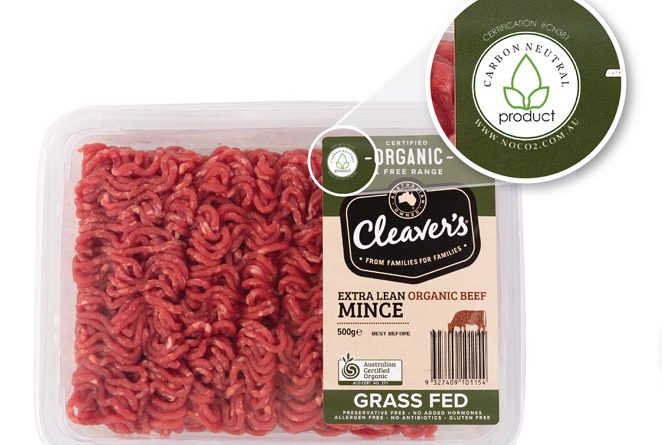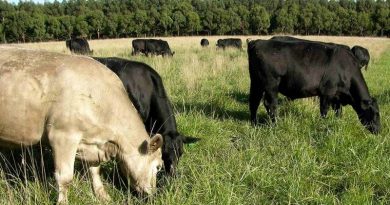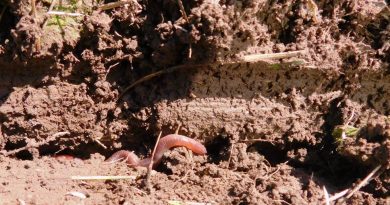Soil carbon double dipping not on
By Patrick Francis
A leading Australian scientist, Professor Richard Eckard, Primary Industries Climate Challenges Centre, University of Melbourne, has urged caution about selling soil carbon credits even when it is possible to generate them. And he cast doubt about projections being promoted by some brokers and advocates for soil carbon sequestration under pasture.
Eckard presented his views during a Beef Connect webinar in November 2021 run by Queensland DPI Future Beef program and Beef Central.
According to Eckard the private sector is driving the momentum towards carbon neutral grazing systems which livestock farmers will have to become conscious of and adopt strategies to participate in carbon neutral based markets in Australia and overseas. Not responding to world climate agreements will put some livestock businesses at risk. He highlighted a range of multi-national food and finance company initiatives including:
* Fonterra a major Australian milk processor – climate neutral growth to 2030 for pre-farm gate emissions from a 2015 base.
* JBS, Australia’s largest red meat processor – net zero greenhouse gas by 2040 and zero deforestation across its global supply chain by 2035.
* Heineken an international brewer – carbon neutral barley malt supply chain.
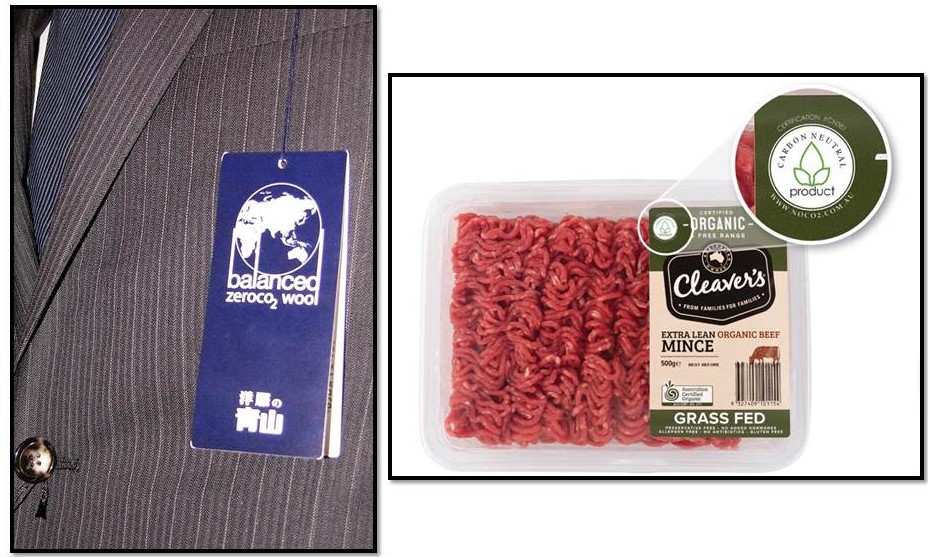
Figure 1: An increasing number of meat and wool processing and retailing businesses are adopting a carbon neutral approach and will expect their farmer suppliers to do likewise.
An interesting comment he made in relationship to these companies climate change intentions as well as those emerging from international agreements was that embracing the issue and setting objectives was critically important in the eyes of food and fibre importers and countries which have carbon neutral targets.
Highlighting the importance of livestock businesses having climate change action intentions was the coincidental announcement a week before this webinar by Australia’s largest beef producer AACo that “…it has made five industry shaping climate and sustainability commitments, … the first of its kind for the beef industry.” Its initiatives involve research into using the red seaweed Asparagopsis to reduce enteric methane emissions in long-fed Wagyu cattle; developing a remote sensing tool for forecasting rangeland soil carbon sequestration; measuring natural capital across its rangeland stations; and certification of animal health and welfare.
Speaking at the launch of the AACo’s sustainability framework chief executive Hugh Killen said customers and bankers were demanding the change.
“The desires of our customers are being felt and expressed stronger than they ever have been before [on] provenance, traceability, sustainability, animal health and welfare. Understanding the whole life cycle is actually key to every conversation we have in the market, all around the world and they’re demanding change,” Killen said.
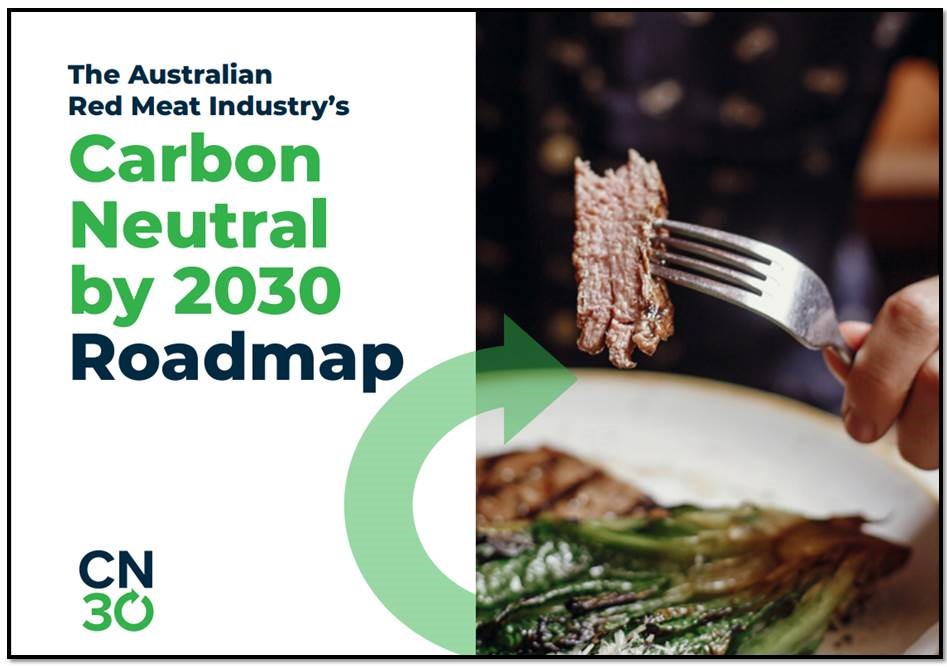
Figure 2: Meat & Livestock Australia has developed a carbon neutral by 2030 roadmap to guide farmers towards reducing livestock and property emissions as well as sequester CO2 in trees and soil. But participating livestock farmers should consider retaining ownership of abatement and increases in stored carbon rather than trading them to a third party who buys them to offset its own greenhouse gas emissions.
Negative financial pressure on exported agricultural products without emissions reductions credentials is also likely to become reality at international borders. Eckard pointed to a quote from President Joe Biden who said “failing to curb emissions means America will tax your products.” Similarly the European Parliament is considering taxing imports from countries without a carbon price.
Understanding terminology around agricultural greenhouse gas emissions and CO2 sequestration is important. Eckard referred to both carbon farming and carbon neutral (net zero) farming.
Carbon farming he defined as “management principles that minimise greenhouse gas emissions, maximise carbon sequestration in the landscape, while improving the productivity and resilience of agricultural systems.” The problem with this definition is that all food and fibre production is carbon farming as CO2 is the universal ingredient for photosynthesis. The term carbon farming is a pleonasm, just like the term “flooding rain”. Eckard demonstrated this with an illustration showing how carbon flows in agriculture declaring “half of all products/compounds in farming is carbon”, figure 3.
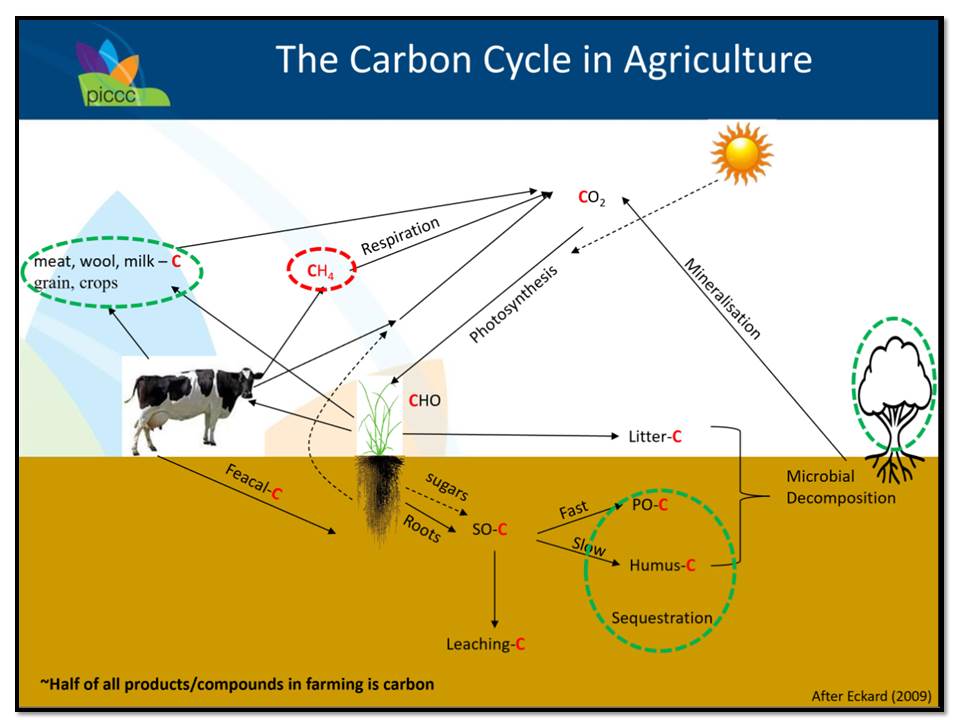
Figure 3: All farming involves carbon flows so all farmers are in effect “carbon farmers”. Source: Richard Eckard Beef Connect webinar 25 November 2021.
On the other hand carbon neutral or net zero farming has more clarity as it is based on measurements and scientific research. He defines it as “management that minimises greenhouse gas emissions, and offsets the balance of emissions through sequestration of an equivalent amount of carbon dioxide in soils or vegetation.”
Carbon neutral livestock farming is demonstrated by two case studies in research undertaken by Eckard’s colleague Dr Natalie Doran-Browne, figure 4. The results show the impact of management to reduce emissions and activity to increase sequestration, in both cases mainly through tree revegetation, on greenhouse gas balance. With the low to medium livestock productivity Talaheni farm emissions are low, sequestered CO2 in trees is high and increasing making the farm carbon neutral (in fact a net sink) over many years. In contrast, on the high livestock productivity farm the balance between reduced emissions and increased sequestration falls just short of carbon neutral over many years. But without action to reduce emissions and sequester CO2, Talaheni would be a significant greenhouse gas emitter.
Both farms consist of perennial pastures and soil carbon is a minor contributor to achieving carbon neutrality.
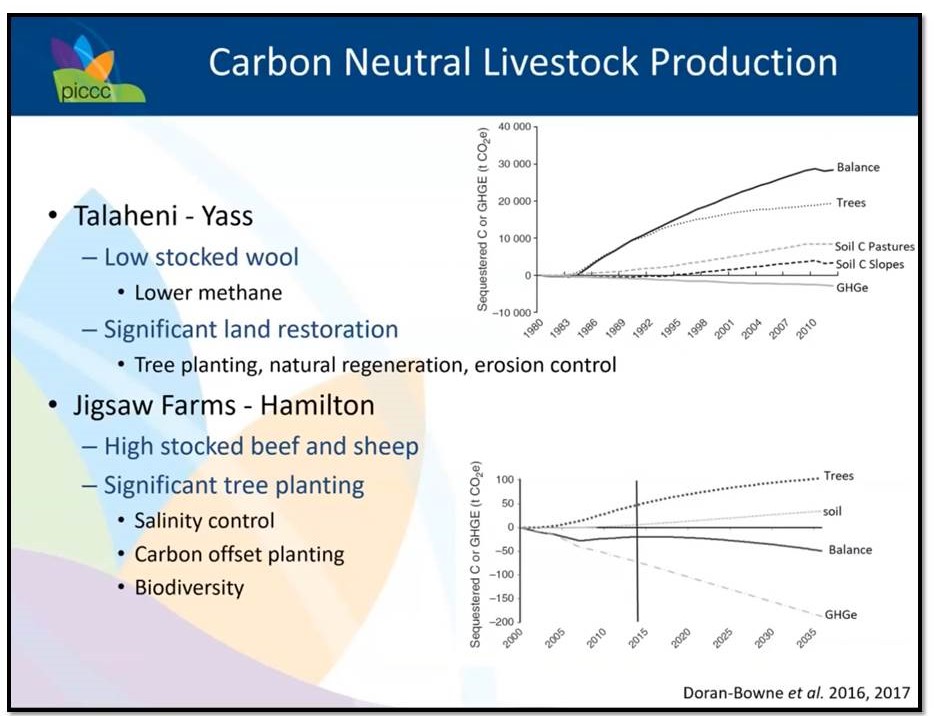
Figure 4: Carbon neutrality status over 30 years of two case studies farms with different levels of livestock productivity. Source: Dr Natalie Doran-Browne, University of Melbourne.
Eckard drew a distinction between livestock businesses demonstrating carbon neutrality to access premium markets or for compliance to meet trade barriers and trading carbon credits at the same time.
The issue here revolves around ownership of the carbon sequestered on the farm and that double dipping the credits is not allowed. He said if a farmer sells Australian Carbon Credits Units (ACCUs) to the government through an approved Emissions Reduction Fund methodology e.g. soil carbon, reafforestation, it is possible but not yet confirmed that the industry could claim the abatement as part of its commitment to carbon neutrality. To be able to claim the abatement is critical to the Meat & Livestock Australia’s (MLA’s) Carbon Neutral 2030 agenda for red meat.
But if farm business sells its carbon credits on the voluntary market to a company wanting to offset its emissions e.g. an airline, then the farmer no longer owns the carbon offsets and cannot claim them towards achieving business carbon neutrality. If it sells the credits to an overseas company as per the high profile sale of soil carbon credits from a NSW cattle property to Microsoft, not only does the business loose its opportunity for a neutrality claim, the credits are lost to the livestock industry and Australia.
Eckard previously told Beef Central that livestock farmers should consider their own need for carbon credits before selling them.
“When it comes to tree carbon or soil carbon, it’s like a bank account that can accumulate as you grow trees or improve soil carbon. But if you sell your carbon credit to another company, it has gone from your property and possibly out of the industry.
“One day when you need to become carbon neutral, that stock is not available to you but it’s on your land and you need to look after it for someone else.”
He said with meat processing companies like JBS committing to become carbon neutral by 2040 beef and lamb farmers might have trouble accessing markets if they are not carbon neutral themselves.
This point was also made in a May 2021 NSW DPI webinar about soil carbon accounting when Dr Stephen Wiedemann said “…you can’t sell carbon credits and also claim the same emission reduction/carbon storage for a carbon neutral brand.”
In the same May webinar Stuart Austin manager of Wilmont Cattle company, Ebor NSW, described how it negotiated a private market soil carbon credit in which it sold 43,338 tons of CO2e sequestered in soil from 2017 – 2020 to Microsoft for a net profit of $497,829 or $62 per hectare.
In 2020 Microsoft president Brad Smith announced his company’s objective to be carbon negative by 2030. Purchasing soil carbon credits was included as one of the mechanisms for achieving that objective (Appendix 2).
“It is misleading to talk up the carbon market as something producers can make a lot of money from, without mentioning these other issues,” Eckard said.
While the dollar returns from soil carbon trading might seem attractive Eckard urges caution about going down this path for a more fundamental reason, stable outcomes are virtually impossible to rely on because soil organic carbon level is mostly affected by rainfall, figure 1.
“Soil organic carbon level changes are 90% impacted by rainfall and 10% impacted by management,” he said.
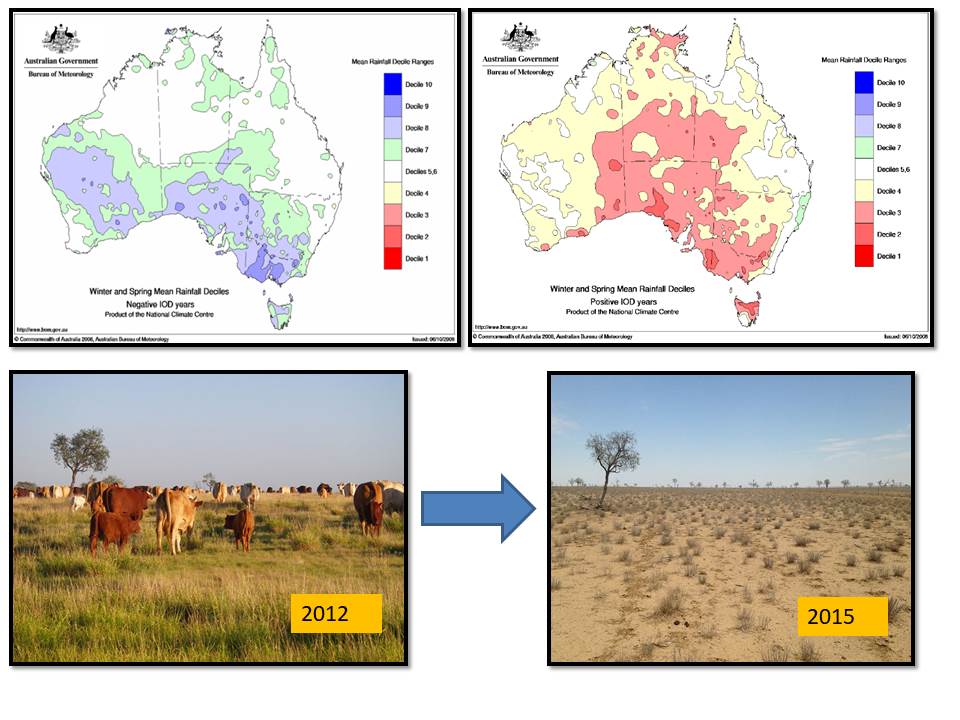
Figure 5: Eckard contends that managing for soil carbon increase is problematic because Australia’s rainfall pattern is highly variable and impacts soil carbon stock accordingly. He contends reducing livestock greenhouse gas emissions as a means to achieve property carbon neutrality will be more rewarding. Top: Impact of negative (left) and positive (right) Indian Ocean Dipole years on mean rainfall – Source BOM. Bottom: Photo point showing impact of rainfall on western Queensland station vegetation – Source ABC Rural.
He demonstrated the impact of growing season rainfall on soil carbon with research comparing the soil organic carbon flux over years at Hamilton (high rainfall, cool climate perennial pasture clay soils western Victoria) versus Birchip (low rainfall, warm climate, sandy soil, Mallee cropping district north west Victoria), figure 6. The graphs demonstrate enormous change in SOC depending on rainfall with the largest variation happening in the Birchip district where crop biomass is highly impacted by growing season rainfall.
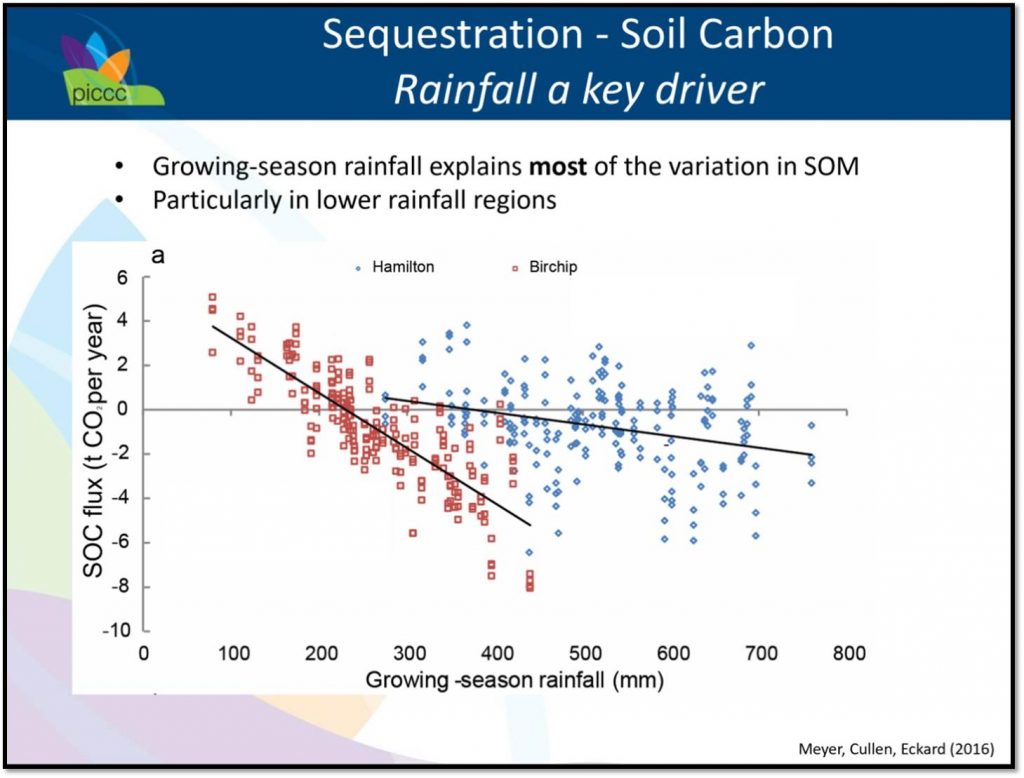
Figure 6: Rainfall is the key driver between soil organic carbon levels irrespective of the farming district and enterprise. Source: Richard Eckard Beef Connect webinar 25 November 2021.
Another interesting set of data Eckard presented cast doubt on what is achievable in terms of soil carbon sequestration. It is a comparison between model estimates of potential soil carbon sequestration rates from the Federal government and the Emissions Reduction Fund versus research showing the impact on soil carbon by converting paddocks from cropping to long-term pasture, table 1. It shows that on farm land with the most potential for soil carbon increase, long-term cropping land converted to long-term pasture, the modelled estimates are widely different to the scientific evidence which provides a wide variation in outcomes.
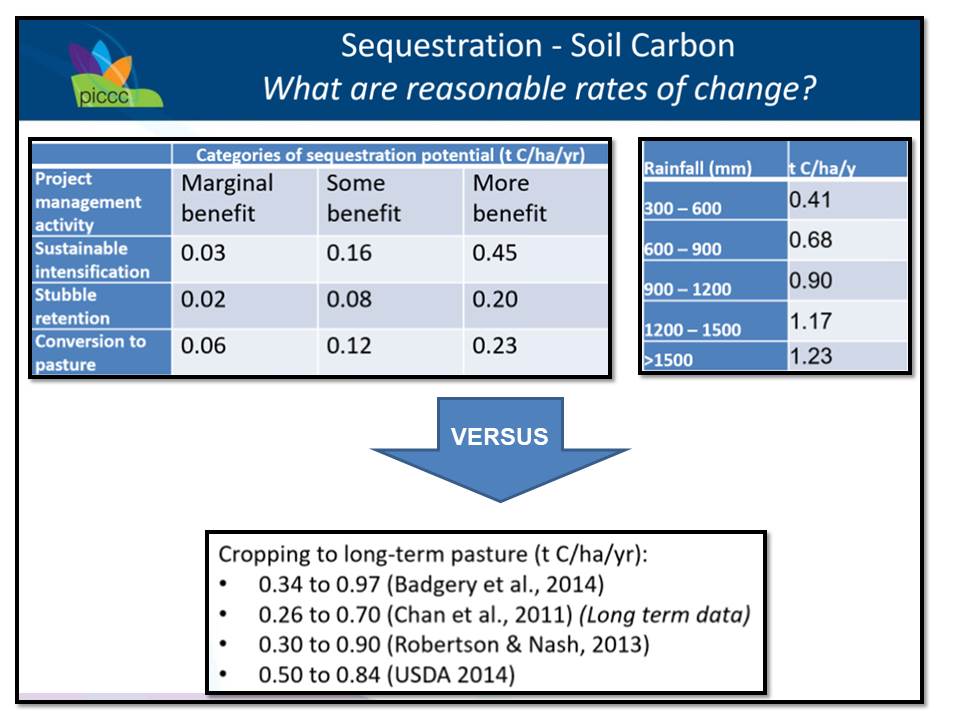
Table 1: Model estimates of soil carbon sequestration are often out of line with scientific research. Top left table: Estimates of soil carbon sequestration using default values, Methodology Determination 2015; Top right table: ERF potential for soil organic carbon sequestration by pasture land use and rainfall zone in Australia; Bottom table: Soil science research carbon sequestration results for converting cropping land to long-term pasture. Source: Richard Eckard Beef Connect webinar 25 November 2021.
Despite the enormous impact of rainfall and low impact of management on soil carbon under Emissions Reduction Fund soil carbon sequestration methodology rules, any eligible increases in soil carbon must be a result of adopting a new or changed eligible farming activity in other words, management. The eligible activities (Appendix 1) include applying nutrients to land, applying lime or gypsum, sowing new pasture species to re-establish or rejuvenate a pasture, alter carrying capacity or intensity of grazing e.g. rotation and cell grazing, modify landscape or landform to remediate land e.g. deep ripping.
Eckard contends that management to maintain or build soil organic matter has multiple benefits, often referred to as co-benefits and is “…just good practice.” It has positive impacts on soil biology, physical structure and water retention, and soil chemistry. So in his opinion the financial benefit to businesses in heading towards carbon emissions neutrality comes through these outcomes as well as from the farm being more climate resilient. And by retaining any increases in carbon stocks in soil or trees within the farm, the business has a carbon reserve which is likely to be needed to meet future demands for carbon neutrality by livestock markets and governments.
It should be noted that most of the eligible management activities for soil organic carbon sequestration have been advocated and promoted to farmers as best practice by agricultural scientists for decades. Understanding the context (soil, climate, enterprises) in which any of these eligible activities apply to increase soil organic carbon stock is the challenge for farmers.
Appendix 1: Carbon Credits (Carbon Farming Initiative—Estimation of Soil Organic Carbon Sequestration using Measurement and Models) Methodology Determination December 2021
Definition of a soil carbon project:
Involves the sequestration of carbon in soil in an agricultural system through carrying out one or more eligible management activities.
A management activity is an eligible management activity if it involves one of the following activities:
Note: This may include, but is not limited to, use of compost or manure.
(ii) applying lime or other ameliorants to remediate acid soils;
(iii) applying gypsum to manage sodic or magnesic soils;
(iv) undertaking new irrigation;
(v) re-establishing or rejuvenating a pasture by seeding or pasture cropping;
(vi) establishing, and permanently maintaining, a pasture where there was previously no or limited pasture, such as on cropland or bare fallow;
(vii) altering the stocking rate, duration or intensity of grazing (or any combination of such activities) to promote soil vegetation cover or improve soil health, or both;
(viii) retaining stubble after a crop is harvested;
(ix) converting from intensive tillage practices to reduced or no tillage practices;
(x) modifying landscape or landform features to remediate land;
Note: This may include, but is not limited to, practices implemented for erosion control, surface water management, drainage/flood control, or alleviating soil compaction. Practices may include controlled traffic farming, deep ripping, water ponding or other means.
(xi) using mechanical means to add or redistribute soil through the soil profile;
Note: This may include, but is not limited to, clay delving, clay spreading or inversion tillage.
(xii) using legume species in cropping or pasture systems;
(xiii) using a cover crop to promote soil vegetation cover or improve soil health, or both.
At least one of the land management activities is new or materially different from the land management activities conducted during the baseline period (5 years prior to application); and more carbon can reasonably be expected to be sequestered in that system as a result of carrying out that land management activity.
Appendix 2: Microsoft will be carbon negative by 2030
Jan 16, 2020
By Brad Smith – President & Vice Chair
Microsoft will be carbon negative by 2030 – The Official Microsoft Blog
“By 2030 Microsoft will remove more carbon than it emits, setting us on a path to remove by 2050 all the carbon the company has emitted either directly or by electrical consumption since it was founded in 1975. We will achieve this through a portfolio of negative emission technologies (NET) potentially including afforestation and reforestation, soil carbon sequestration, bioenergy with carbon capture and storage (BECCs), and direct air capture (DAC). “

